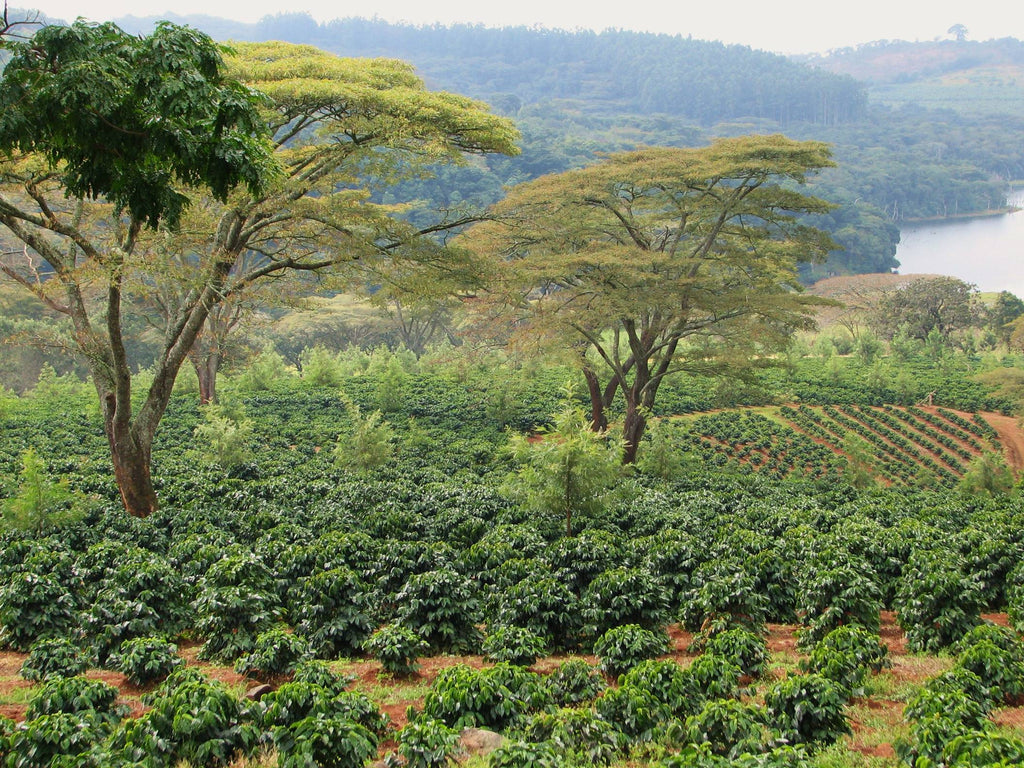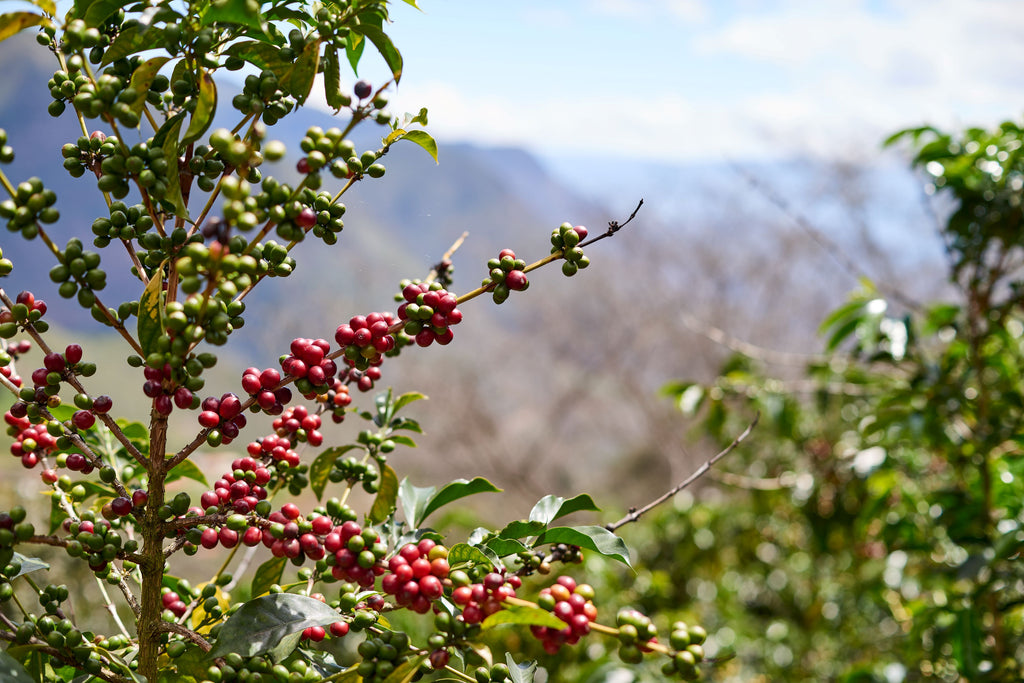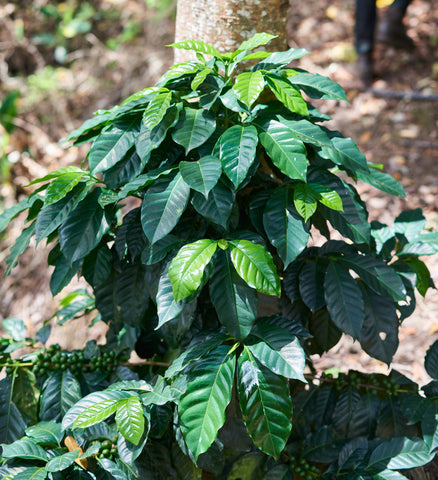Estate: Pezuru
Region: Eastern Highlands
Altitude: 1100 – 1300 masl
Varieties: Catimor, Caturra
Process: Washed and sun dried
A landlocked African country borders with S. Africa, Botswana, Zambia, and Mozambique, located between the Rivers Zambesi and Limpopo.
A TROUBLED HISTORY
European and British colonisation in the 1880s, wars, civil wars, genocides, political unrest – unfortunately pretty much what you would expect to hear as part of the history of an African country. I always find these countries’ histories to be complicated as a lot have changed their name throughout their history and plenty of political unrest makes things complex and sometimes difficult to understand – or perhaps that’s just me!
So, to put things in a little bit of perspective, without going into too much detail, here’s a few moments in Zimbabwe’s history that I find relevant to the coffee aspect I want to talk about:
In 1965, Zimbabwe, formerly known as Rhodesia, regarded itself as an independent sovereign state when the Unilateral Declaration of Independence (UDI) statement was adopted by the Cabinet of Rhodesia. Prior to this and since 1923 this British territory had governed itself. All this came about when a long-drawn-out dispute between the British and Rhodesian governments about the terms under which the Rhodesian government would eventually become independent. The colonial era eventually ended as late as 1980 when Zimbabwe gained full and official independence, although this didn’t end Zimbabwe’s troubled history with more political unrest and land reforms during the following couple of decades.

THE RISE OF ZIMBABWE’S COFFEE INDUSTRY
Zimbabwe’s coffee history seems to go back to the 1890s when travellers brought it to the country but was only sporadically planted and cultivated. After this, coffee in Zimbabwe has had many false starts. It picked up a bit during the early 1900s but nearly vanished in the 1920s when plant disease wiped out nearly all of the small plantations. It was as late as the 1960s when it was first produced in a commercial capacity when Zimbabwe was able to establish strict classification and Zimbabwean grading standards ensuring the coffees had the quality suitable for exporting.
The early 1980s saw coffee production gaining ground in the market and Zimbabwean coffee was finally being recognised for its quality and flavour. This resurgence saw coffee production in the country peaking in the late 1980s. During that period, coffee production was the key crop and in 1988 the country’s annual production reached around 16,000 metric tonnes with projections of production reaching 20,000 mark by 2004. The coffee was grown across northern and eastern Zimbabwe by both estates and small holder farmers and at the time, Zimbabwean coffee was very sought after in places such as London and New York.

THE FALL OF ZIMBABWE’S COFFEE INDUSTRY
At the very end of the 1980s and going well into the 2000s, a combination of economic hardship, political unrest, land reforms and climate shocks such as droughts, destroyed the industry.
Land ownership in particular, became a huge politically charged issue when President Robert Mugabe’s controversial land distribution policy was created. His land reforms stripped thousands of Zimbabwean farmers of their land and consequently of their livelihoods. The large coffee Estates were often owned by long-established white families. The smaller farmers, often from the black farmers – also known as ‘out-growers’ - used the surrounding areas and gained the expertise, support, and some financing from the Estates; they also gained a market for their coffee. With the political instability and with young militants – followers of President Mugabe – raging and seizing the fields and white-owned coffee farms, many farmers died, and many were chased into exile. This had a huge impact on the smaller farmers livelihoods too.
Following this, coffee was often burned in mass land clearings as coffee farming was considered as too much hard work with long yield and without immediate profit. Stability did start to return slowly, although in 2006 inflation exceeded 1,000%!! Think about this, inflation reached the levels where new banknotes were being produced with 3 noughts deleted from their values!! Money was worthless! In terms of where the coffee industry was? Well, the situation meant that the capacity to produce any volumes of coffee – never mind good quality coffee – was directly harmed. The best dry mills had shut down one by one due to the lack of volumes.
HOPE AND A PROMISING FUTURE
The bottom line is, that Zimbabwe’s Eastern Highlands are truly suited for growing arabica coffee. Although climatic challenges such as long dry seasons, occasional cyclones and pest outbreaks exist, technical skills and knowledge can manage these effectively when it comes to growing coffee. Good rainfall, rich soil and cool temperatures due to the Highlands altitude – nearly 4,000 feet masl – compensates in part for the challenges. Following the industry setbacks throughout the years, Zimbabwe has the basic requirements in place to produce amazing quality coffee. What was then needed was political stability and a government that was able to begin to re-build the country economically.
Since 2011 an international non-profit organisation – TechnoServe – has been working hard to help resurrect the coffee industry in East Africa, including Zimbabwe. The county’s coffee is now experiencing a renaissance and is gradually changing for the better. The number of small holder farmers has increased. A lot of foreign investment (private buyers) and government initiatives are both helping with providing facilities, training and a huge amount of knowledge to help the farmers in becoming great coffee growers and being able to enter the market at a high price.
 It is still quite rare to see a huge variety of coffee from Zimbabwe but is slowly and steadily gaining strength and entering the speciality coffee market and we hope that we will slowly be able to taste more and more great coffee from there.
It is still quite rare to see a huge variety of coffee from Zimbabwe but is slowly and steadily gaining strength and entering the speciality coffee market and we hope that we will slowly be able to taste more and more great coffee from there.
OUR COFFEE – PEZURU ESTATE
So, before that can happen, we have a great one that we were able to get our hands on for you to love just as much as we love it!
The Pezuru Estate totals 294 hectares, with a quarter of the farm still under natural forest. It is a multipurpose estate with only 45 hectares of it growing coffee. The first seedlings were planted back in 1962. The Estate is located near the Chiremba Dam, which is fed by small streams and acts as general catchment area from the surrounding hills and provides support for the irrigation of coffee during the long dry season from May to October. It also provides bass and bream fishing for the local community.
The quality of farm management has led to meticulous standards for ripe cherry-picking and processing, ensuring quality of cup. The hand picking and wet processing occurs at the farms own pulperry, with sun drying on trellis platforms. The grading and preparation of the coffee for export also takes place at the farm.
Make sure you give it a try and help the coffee industry in Zimbabwe flourish once again - here


